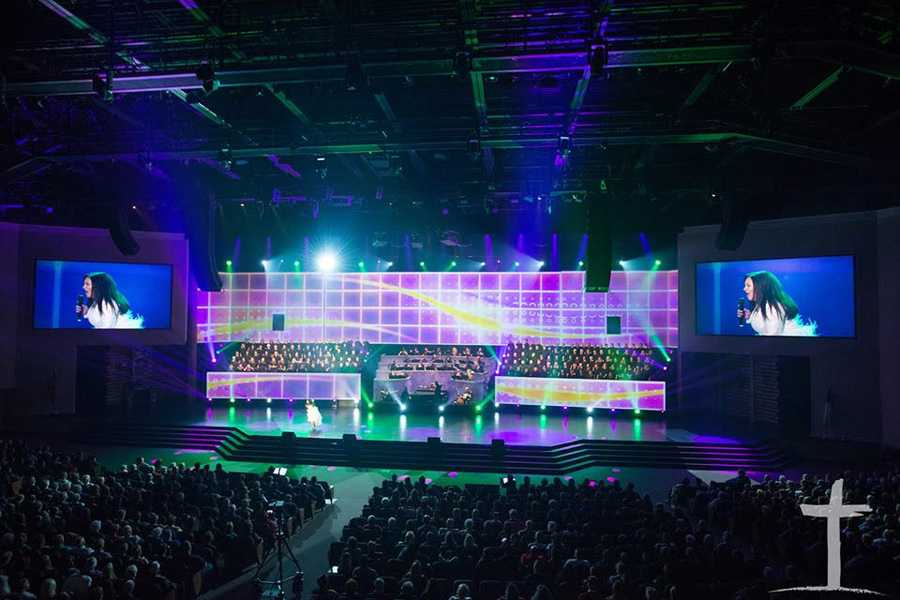First BroaMan autorouter in North America
- Details

The Optocore platform is easily programmed and connected using redundant fibre connections and allows for near instantaneous transmission of audio, control and data without any loss or electrical interference. This makes Optocore enabled consoles an appealing choice for audio technicians that need to transport a large amount of audio, maintain great quality audio and not worry about IT integration or IP addresses.
An additional benefit to using the Optocore fibre network with SD consoles is the ability of using any Optocore R-Series device on the same network with full control of routing, gain and phantom power from the console surface. Thomas Road Baptist Church in Lynchburg, VA, took advantage of this feature when they recently upgraded the worship facility to include an Optocore DD4MR-FX network MADI device and the first BroaMan Route66 Autorouter (technology powered by Optocore) installed in North America.
BroaMan Route66’s have been used on numerous live events and in the Production/Touring markets on shows that required a high degree of redundancy and flexibility; Thomas Road’s services are no different. There are multiple connection points throughout the space where consoles and equipment are constantly moved around depending on the service they are hosting on any given day, demanding a robust device that is easy to operate.
The same operators of Thomas Road Church have another production facility in the nearby Liberty University which utilizes a passive fibre patch bay. As they were planning for the upgrade audio systems architect, Mike Gerringer wanted to implement a system that was easier to use and more technical to match the renovations that were happening to the rest of the audio system.
“With the passive system there’s a lot of thought that has to go into re-patching the system - remembering which locations we’re using and what connections those are,” says Mike. “The reason for choosing the Autorouter was to simplify the day-to-day operation of the venue. We had looked into using a loopback system to connect every location at the same time but with the Autorouter we don’t have to disconnect cables if we aren’t using that location. If we aren’t using Monitors then we can just leave that console off. It also means that our part-time volunteers don’t need to worry that the consoles are plugged in correctly or how to use a patch bay.”
A large component of the Church’s service is its broadcasts. They’ve been recording their services since its founding in 1956, when they would air on local and national TV channels. Now an Optocore DD4MR-FX is used to feed MADI to an AVID S6L and Pro-Tools recording equipment straight from the SD Racks and a Dante network. The DD4MR can support 128 MADI I/O at 48 kHz sample rate networks which gives them lots of I/O for their needs.
“The flexibility and the ease of use of the system is amazing,” Gerringer comments. “The sound quality and warmth that we get now because of fibre is leaps and bounds above what we had before when we were using an analogue distribution system. We have lots of plans moving forward on how to expand to accommodate guest musicians and how to interface with our other campuses, and the new optical network means we aren’t limited by channel counts or cabling.”
(Jim Evans)
















